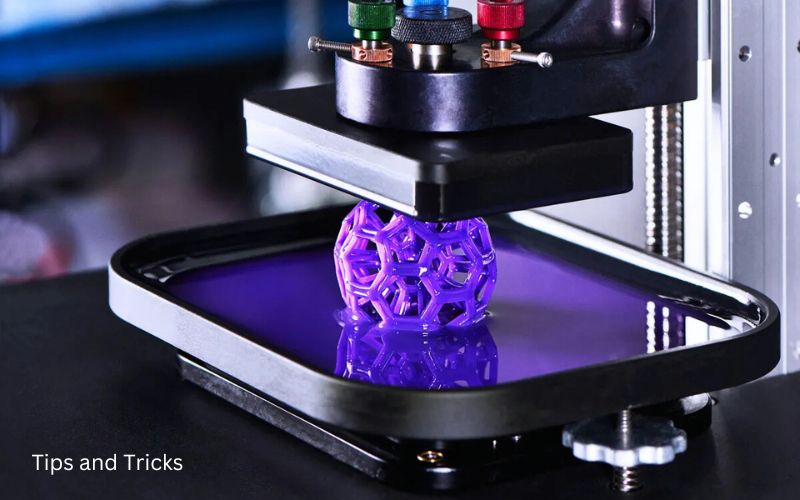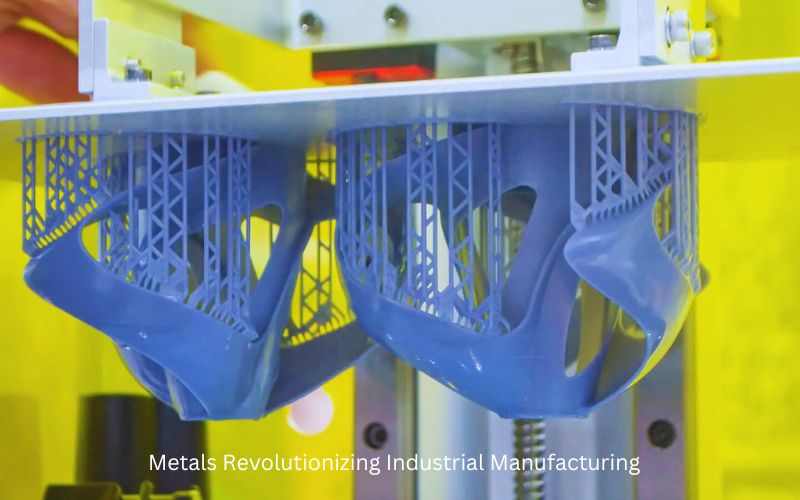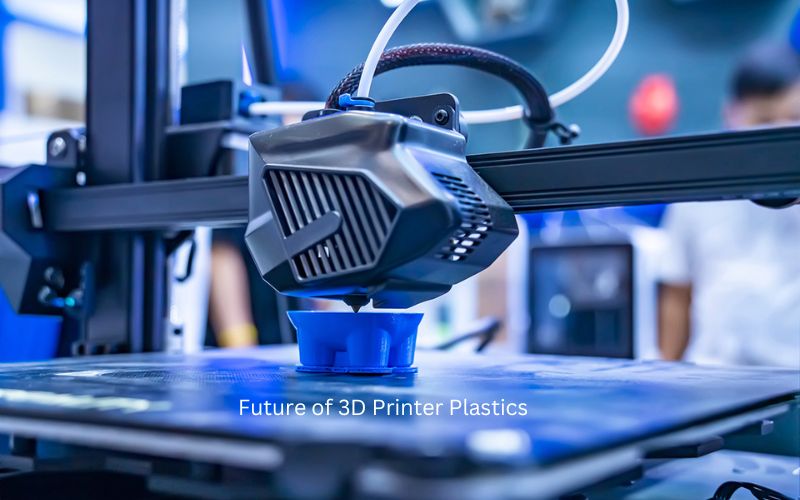The 3D printing plastics market is expected to grow at a CAGR of 24.2% between 2025 and 2030, making it the ideal time to enter the market. The knowledge of appropriate plastic materials is relevant whether one is a homemaker or a corporate person.
As a 3D printing specialist, I have spent many years helping people understand the fundamentals of functional plastic composition. You will learn today how to choose the right plastics for your projects.

Types of 3D Printer Plastic and Their Uses
Common Types of 3D Printer Plastics
A quick overview of some of the most popular plastics can be invaluable when it comes to 3D printing:
- PLA (Polylactic Acid): The PLA material is best for beginners. It is easy to print with and is made from plants. It is a biomaterial that can be used to print intricate models. PLA can be printed at low temperatures and does not require a heated bed.
- ABS (Acrylonitrile Butadiene Styrene): This plastic is strong and heat-resistant, and it is used to make toys and automobile parts. When printed, it requires mechanical ventilation due to the creation of fumes.
- PETG (Polyethylene Terephthalate Glycol): PETG is also durable, flexible, and strong. It’s made from PLA and ABS, making it ideal for food-grade applications.
- Nylon: It is a strong, flexible, and durable material. However, nylon absorbs water and should be kept dry.
- TPU (Thermoplastic Polyurethane): In addition to being flexible and elastic, the TPU composition can easily be bent and twisted without breaking.
It is essential to choose the right plastic for each printing strategy. Plastic enhances projects in a variety of ways.
Specialty 3D Printer Plastics
ASA (Acrylonitrile Styrene Acrylate): It has good impact resistance and heat resistance, which makes it ideal for outdoor signage and automotive components. ASA requires a hot printer, but the results are well worth it.
Polycarbonate: As a rigid, heat-resistant material, polycarbonate is ideal for producing protective equipment and machine components. It is lighter than glass, yet it withstands impact without breaking. To make the material strong enough, it must be printed and heat-treated, a process that is quite challenging. For weather-resistant and rugged projects, Polycarbonate and ASA are both good choices.
Choosing the Right Plastic for Your 3D Printing Needs
Factors to Consider When Selecting 3D Printer Plastic
To choose the best 3D printing plastic material for your project, consider several key factors. Firstly, consider the potential project’s needs, including the strength and flexibility of the item, as well as the conditions it will be exposed to. For example, ABS is rugged and robust, making it suitable for use in high-temperature environments, whereas PLA is a biodegradable material that can be used in green projects.
The next step is to research your printer’s specifications and settings. Different plastics require different temperatures and speeds during printing. To achieve a good print without deformation, some plastics, such as nylon, require an enclosed environment and a warm bed. Make sure your printer is capable of printing them.
A final consideration is the plastic’s eco-friendliness and recyclability. PLA, on the other hand, is made from biodegradable components, which makes it a less harmful plastic. However, ABS is not biodegradable, but it can be composted, allowing for eventual recycling.
By managing these aspects, you can select the most suitable 3D printer plastic, ensuring success and sustainability as you generate income from your 3D printer.
Printer Plastics
New Biodegradable Options and Their Impact on Sustainability
PHA is a biodegradable material that can be used in 3D printing. PLA, which is made of corn starch, is a popular option. It is relatively straightforward and relatively green. However, it decomposes in special composting plants.
A different option is PHA, which decomposes faster and is more moisture resistant. However, it is more expensive and is difficult to access. As a result, plastic waste is reduced. Technological advancements have made them even more helpful.
Advances in High-Performance Materials for Industrial Use
High-performance materials are transforming the aerospace and automotive industries due to their strength, heat resistance, etc. Carbon fiber composites are lightweight and strong, making them ideal for vehicles.
PEEK plastic is strong enough to withstand significant impact. These materials assist in engineering lighter and more efficient components. As prices fall, 3D printing will become more accessible across various industries, driving further innovation.

Tips and Tricks for Optimal 3D Printing with Plastics
Preparing Your Printer and Materials
To improve the quality of your 3D prints, take proper care of your filament and optimize your settings according to the material type you are using. Choosing the best 3d printer for a small business also ensures consistent results and smoother printing experiences.
Keep Filaments Dry
When filaments are exposed to moisture, they become brittle and unusable. Please keep them in an airtight or vacuum-sealed container and include a desiccant pack to soak up moisture. Nylon and TPU materials require additional protection. Store them in resealable bags or special storage boxes.
Set Up for Each Material
Different materials require different parameters. Always pay attention to the recommended nozzle temperature. PLA is generally printed at lower temperatures than ABS filament. Also, choose the correct nozzle size.
To print a detailed print, nozzles of a smaller size are needed. As the size increases, the print’s detail decreases, but it is completed faster.
The print bed settings should also be adjusted for each material. ABS filament tends to warp otherwise. PLA filament does not require this. These settings should be adjusted for each material for a good print.
Improving Print Quality
Adjusting temperature settings for different plastics
By adjusting the temperature settings according to the type of plastic used, it is possible to improve the quality of 3D printed objects. PLA, for instance, requires lower heat, while ABS requires extra forces. However, excessive heat can damage it. Make sure you follow the manufacturer’s guidelines.
Using support materials like PVA for complex designs
It is easy to remove the PVA support material, since it is water-soluble and can be used with dual-extrusion printers, especially PLA printers. PVA support material can smooth out complex structures.
If water ever moistens PVA, place it in an oven at a low temperature. If it does, melt off the support using warm water without damaging the tote. Although these may seem basic, they can significantly enhance your 3D printing experience.
Post-Processing and Finishing Techniques
Sanding and Polishing for Smoother Finishes
The water-soluble nature of the PVA support makes it effective for advanced structures. It can be used in dual-extrusion printers, preferably with PLA output. Always use PVA in a dry state.
If moisture is present, place it in a low-temperature oven to dry it out. Dissolve the support in warm water, which will not damage the print. With these instructions, you will be able to print 3D prints of significantly better quality.
Painting and Coating for Added Durability
When 3D printed materials are painted or coated, they become more appealing as they provide additional protection. Primer should be applied to the entire part to fill small holes and prepare the surface for painting. Once it has dried, sand the coated area to thin down the primary coat.
Make sure to use paint that is suitable for plastics–most people use acrylic or enamel. Spray paints are more even, but ensure adequate air flow. A clear coat can also be applied as an option to increase wear resistance and protect the part from outside influences.

3D Printer Plastic: Metals Revolutionizing Industrial Manufacturing
By using 3D printing technology, metals have risen to the top of industrial manufacturing. As a result of this new technology, the manufacturing process in different industries has changed entirely because design possibilities have expanded, enabling new products to be developed and enhanced.
Industrial manufacturing has become more efficient and environmentally friendly thanks to the ability to print in metal. Let’s examine how metal 3D printing and its benefiting industries are transforming the industry landscape.
3D Printer Plastic: Benefits of Metal in 3D Printing
Industrial manufacturing can be significantly improved through the use of Metal 3D printers:
- Intricate Designs: The use of 3D printing in metal allows the fabrication of complex and complicated shapes that are unattainable using other manufacturing methods. This opens up endless possibilities for design and production.
- Robust Materials: The production of pieces with remarkable and strong mechanical properties has made this technology particularly helpful in areas requiring structural strength.
- Cost Savings: Intricate metal components can be made on demand without costly tooling, thereby reducing production costs and lead times.
- Reduced Waste: This technique enables a reduction in material wastage by utilizing only what is needed, thereby advancing manufacturing toward environmental sustainability.
- Flexible Customization: With metal 3D printing, design changes can be easily implemented, allowing ideas to be tested quickly.
Metal 3D printing advances industrial manufacturing, enabling new and improved production processes with these benefits.

Range of Metals and Alloys for 3D Printing
As 3D printing of metals becomes more common, several metals and alloys can be used. Each type has its own advantages. Let’s look at the metals that are preferred for 3D printing parts and what their advantages are:
| Type of Metal | Applications |
| Stainless Steel | Aerospace, Automotive, Medical Implants |
| Titanium | Biomedical Implants, Aerospace, Military |
| Aluminum | Aerospace, Automotive, Consumer Goods |
| Nickel Alloys | Aerospace, Energy, Chemical Processing |
Metal 3D printing has increased efficiency and scope of use due to its versatility with materials.
Key Industries Revolutionizing With Metal Printing
In the modern age, industries that are very eminent for transformation and progress are becoming great thanks to Metal 3D printing. They include:
- Aerospace: Metal 3D printing is revolutionizing aerospace by enabling the fabrication of complex, lightweight parts with enhanced performance characteristics.
- Medical: Metal 3D printing is also used in the medical field to develop complex-shaped implants and prostheses, resulting in faster recovery times.
- Automotive: Metal 3D printing technology enables the manufacture of complex components and low-density parts, transforming the automotive industry.
- Tooling and Mold Making: A metal printing process optimizes the production of tooling components and molds, enabling shorter lead times and better quality parts.
Ceramic and Glass Innovations
A recent advancement in ceramic and glass materials has opened up new creative and technological possibilities for 3D printing. With these materials’ unique properties and their applications in fields like electronics, aerospace, and even interior design, the next era of 3D printing will be a unique one.
The integration of mass-scale systems still faces obstacles, however. Ceramics and glass innovations have made a significant contribution to 3D printing.
Distinct Characteristics of Ceramics and Glass
It is essential to differentiate ceramics from glass in the 3D printing process. Ceramics, for instance, are heat-resistant, strong, and durable, whereas glass is transparent, chemically stable, and smooth to the touch. In some industrial applications, ceramics and glass can be used because of these features.
Uses in Electronics, Aerospace, and Home Decor
3D printing with ceramics and glass technology applies to many fields. Ceramics can be used in electronics, as heat sinks and insulators, and glass ceramics can be used in optics and sensors.
Ceramic parts and nozzles are used in aerospace manufacturing, whereas glass is used for windows and structural components. It is possible to produce decorative objects, vases, and statues from ceramic and glass using 3D printing for interior design.
Barriers to Adopting These Materials
Ceramics and glass can be 3D printed, but each has its own drawbacks. Ceramics are fragile, and glass is beautiful, so the production process is negatively affected. In any advancement of 3D printing’s capabilities, preserving material property fidelity is a significant barrier.
Future Composites and Hybrids
3D printing technology continues to advance with the introduction of new composites and hybrid materials. These materials are highly versatile, offering a wide range of customization and functional possibilities.

Exploring the Future of 3D Printer Plastics
A significant development in 3D printing is metal-infused filaments. They combine regular PLA or ABS with metal, bronze, or copper, for example. This creates durable items that resemble metal.
It’s also essential to consider sustainability. With the growing use of 3D printing techniques, some companies are using recycled materials in the creation of 3D printed objects, and some printers can even recycle waste. In turn, this reduces waste and benefits the environment.
3D printing is also revolutionizing industries. It enables faster manufacturing and prototyping operations, allowing companies to bring products to market more quickly without relying on conventional methods. 3D printing makes it possible for custom prosthetics and implants in the ‘new era’ of medicine.
These trends are revolutionizing 3D printing. They make production processes quicker, greener, and more personalized.
Wrapping Up
In the future, 3D printing will utilize sustainable and revolutionary plastics. By using recycled materials, we can optimize resource utilization and foster a circular economy. This allows us to introduce greener innovations as soon as possible.
With technological advancement, a wider range of 3D printing applications will be possible due to the availability of more sophisticated and robust materials. With this advancement, 3D printing can create tailored applications and offer greater environmental benefits, further consolidating its position in contemporary manufacturing.
Frequently Asked Questions
What is the best plastic for a beginner?
The best material for beginners is PLA (Polylactic Acid). It is easy to print with, requires a low nozzle temperature (190–230°C), and typically does not require a heated build plate. It exhibits minimal warping and does not emit strong fumes.
How do PLA, ABS, and PETG compare?
These are the three most common filaments, each balancing printability and strength: <ul><li>PLA: Easiest to print, low strength/durability, but biodegradable.</li><li>ABS (Acrylonitrile Butadiene Styrene): High strength, heat, and impact resistance (used for Lego bricks/car parts). It is prone to warping and requires a heated bed (80–110°C) and good ventilation due to fumes.</li><li>PETG (Polyethylene Terephthalate Glycol): A balance of the two. It is strong, flexible, durable, and generally easier to print than ABS, with low warping and no toxic fumes.</li></ul>
What material should I use for outdoor parts?
ASA (Acrylonitrile Styrene Acrylate) is similar to ABS but is specifically formulated with superior UV resistance and weatherability, making it the ideal choice for outdoor signage, automotive components, or any parts exposed to direct sunlight.
How do I fix “stringing” or “oozing” on my prints?
Stringing (thin plastic strands left between parts) is usually caused by the nozzle temperature being too high or incorrect retraction settings. Solutions: <ul><li>Lower Nozzle Temperature: Reduce the printing temperature in 5–10°C increments to reduce the filament’s fluidity.</li><li>Optimize Retraction: Increase the retraction distance and retraction speed in your slicer software. This pulls the filament back into the nozzle more effectively during travel moves.</li></ul>
Can I paint, sand, or post-process my 3D printed objects?
Yes. Post-processing is a common way to improve the appearance and durability of prints. <ul><li>Sanding and Polishing: Use progressively finer sandpaper to smooth out the layer lines.</li><li>Painting: Apply a primer first to fill minor imperfections and prepare the surface, then use acrylic or enamel spray paint suitable for plastics.</li><li>Dissolving: Some filaments, like ABS (which can be smoothed with Acetone vapor) and PVA (which is water-soluble), can be dissolved or smoothed chemically.</li></ul>

Comments are closed.